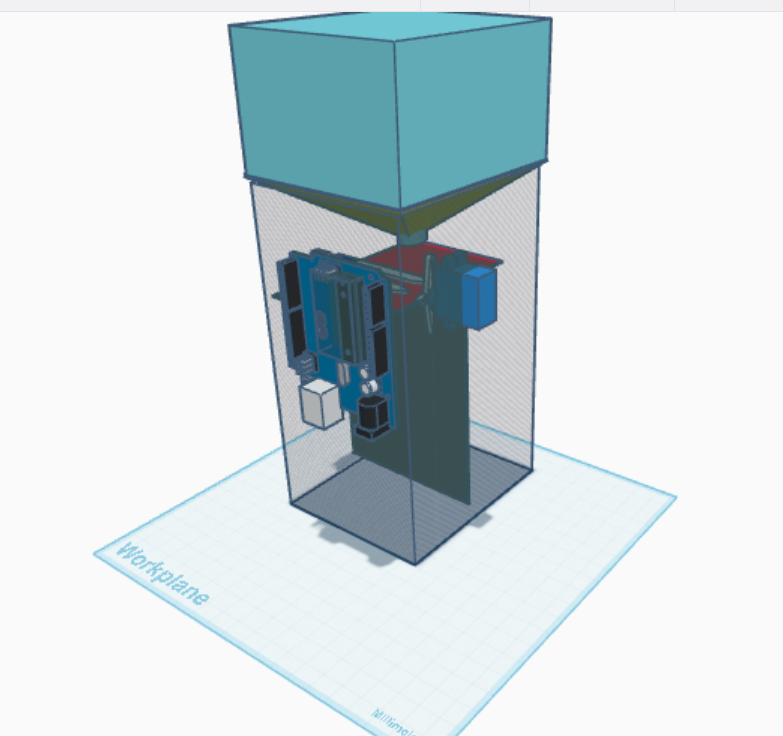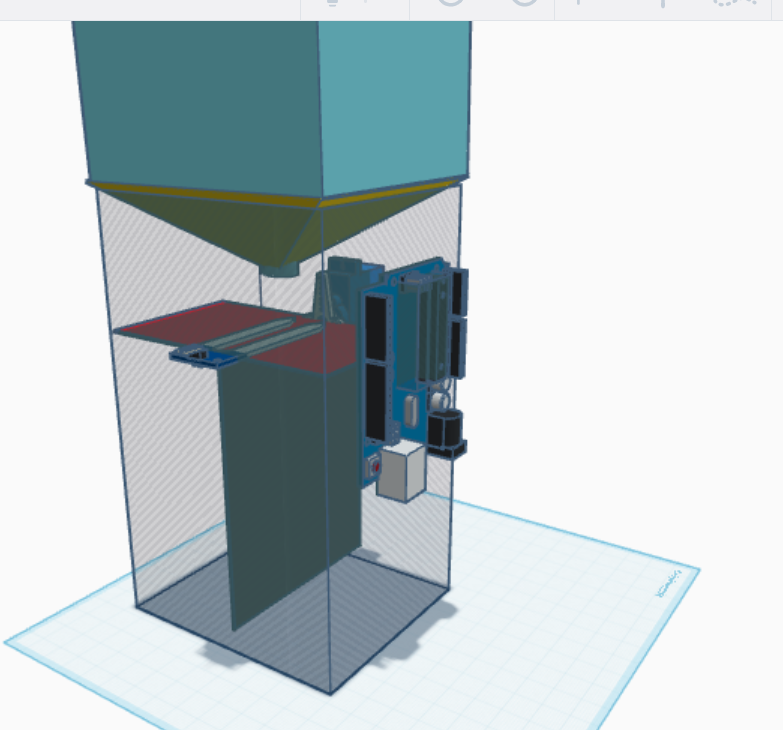People living near trash collection areas go through foul smell and diseasease
We can solve the problem by making an automatic garbage separation Dustbin, which separates dry waste and wet waste. The Machine is composed of microcontroller, a bin box with rotating plate on top, a moisture sensor and an infrared sensor will be planted on the plate and it detects whether the waste contains moisture or not. After this we would code the program in such a way that the wet waste always goes in the wet side of the dustbin chamber. If there is no moisture in the waste, the machine will understand its a dry waste which can lead to proper management of waste. This problem could save both time and labor.
Sarlanagar , Maihar , MP , India
Solution
| Component | Description |
|---|---|
| Technical Components | ### 1. Technical Components Needed #### a. Moisture Detection System - **Components**: Moisture sensors, microcontroller (e.g., Arduino or Raspberry Pi), signal conditioning circuits. - **Purpose**: To differentiate between dry and wet waste based on moisture content. - **Avoids Prohibited Behavior**: Accurate moisture detection ensures no mixing of dry and wet waste. #### b. Waste Detection and Picking Mechanism - **Components**: Proximity sensors, cameras (for object detection), robotic arm or conveyor belt, servo motors. - **Purpose**: Detect waste, pick it up, and transport it to the segregation system. - **Avoids Prohibited Behavior**: Ensures waste is correctly picked and transferred without mixing. #### c. Waste Deposition and Separation System - **Components**: Separate bins for dry and wet waste, actuators to direct waste to the correct bin, microcontroller to control actuators. - **Purpose**: Segregate waste into dry and wet bins based on moisture detection. - **Avoids Prohibited Behavior**: Prevents mixing by correctly directing waste to the appropriate bin. #### d. Dumping and Notification System - **Components**: Level sensors (to detect bin fullness), Wi-Fi/GSM module, notification system (email/SMS API), actuators to open bin compartments. - **Purpose**: Notify when bins are full and facilitate dumping. - **Avoids Prohibited Behavior**: Ensures timely dumping to prevent overflow and mixing. #### e. Surveillance System - **Components**: Day/night camera, motion sensors, storage (SD card or cloud), microcontroller. - **Purpose**: Monitor the area for safety and emergencies. - **Avoids Prohibited Behavior**: Enhances security to prevent tampering. #### f. Automatic Charging System - **Components**: Solar panels, battery, charge controller, power management circuit. - **Purpose**: Provide continuous power to the system. - **Avoids Prohibited Behavior**: Ensures the system is always operational. ### 2. Recommended Tech Stack #### Hardware: - Microcontroller: Raspberry Pi 4 (for processing and control). - Sensors: Capacitive moisture sensors, ultrasonic proximity sensors, PIR motion sensors. - Actuators: Servo motors, linear actuators. - Camera: Raspberry Pi Camera Module V2 (with night vision). - Power: 12V rechargeable battery, 20W solar panel, charge controller. #### Software: - Programming Languages: Python (for Raspberry Pi), C/C++ (for Arduino if used). - Libraries: OpenCV (for image processing), TensorFlow Lite (for object detection if needed), RPi.GPIO (for GPIO control). - APIs: Twilio (for SMS notifications), SMTP (for email notifications). ### 3. Detailed Implementation Steps #### Step 1: Moisture Detection 1. Connect moisture sensors to the microcontroller. 2. Calibrate sensors to distinguish between dry and wet waste. 3. Write code to read sensor data and classify waste. #### Step 2: Waste Detection and Picking 1. Install proximity sensors to detect waste. 2. Use a robotic arm or conveyor belt to pick up waste. 3. Control the arm or belt using servo motors based on sensor input. #### Step 3: Waste Deposition 1. Use actuators to direct waste to the correct bin based on moisture detection. 2. Ensure bins are mechanically separated to prevent mixing. #### Step 4: Dumping and Notification 1. Install level sensors in bins to detect fullness. 2. Send notifications via SMS or email when bins are full. 3. Use actuators to open bin compartments for dumping. #### Step 5: Surveillance 1. Set up a camera with night vision. 2. Record footage to an SD card or cloud storage. 3. Integrate motion detection for alerts. #### Step 6: Automatic Charging 1. Connect solar panels to a charge controller and battery. 2. Ensure the system can switch between solar and grid power if needed. ### 4. Required Technical Learning - **Microcontroller Programming**: Learn to program Raspberry Pi or Arduino. - **Sensor Integration**: Understand how to interface and calibrate sensors. - **Actuator Control**: Learn to control motors and actuators. - **Power Management**: Understand solar charging and battery management. - **Communication Protocols**: Learn to use Wi-Fi/GSM modules and APIs for notifications. - **Image Processing**: Basic knowledge of OpenCV for camera usage. ### 5. Budget Calculation #### Hardware Costs: 1. Raspberry Pi 4: $50 2. Moisture Sensors: $10 x 2 = $20 3. Proximity Sensors: $5 x 2 = $10 4. Servo Motors: $10 x 4 = $40 5. Robotic Arm/Conveyor Belt: $100 6. Actuators: $20 x 2 = $40 7. Level Sensors: $15 x 2 = $30 8. Wi-Fi/GSM Module: $20 9. Camera: $30 10. Solar Panel: $50 11. Battery and Charge Controller: $50 12. Miscellaneous (wires, connectors, etc.): $50 **Total Hardware Cost**: $490 #### Software Costs: 1. Open Source Libraries: $0 2. Twilio API (SMS): $0.0075 per SMS (pay-as-you-go) 3. Cloud Storage (if used): $5/month **Total Software Cost (First Year)**: $60 (assuming 100 SMS/month and cloud storage) #### Maintenance Costs (First Year): 1. Replacement Sensors/Actuators: $50 2. Battery Replacement: $20 3. Miscellaneous: $30 **Total Maintenance Cost**: $100 #### Total Estimated Budget (First Year): - Hardware: $490 - Software: $60 - Maintenance: $100 - **Grand Total**: $650 ### Notes: - Costs are approximate and may vary based on supplier and location. - Additional costs may include labor for assembly and testing. - Software costs are minimal if using open-source tools and pay-as-you-go APIs. |
| Key Features |
Feature: Dry and wet Segregation.
Format: moisture detection Usage: Understanding dry and wet waste.
Feature: Picking up waste
Format: Waste detection Usage: storage in Bin
Feature: Deposition of Waste
Format: Differentiation and Separation of waste Usage: stored in the garbage bin
Feature: Dumping of Waste
Format: Notification to the organization Usage: it will dump the waste in the particular chamber
Feature: Night and Basic camera
Format: for surveillance throughout the day Usage: for safety and emergency situation
Feature: Automatic charging
Format: auto-charges itself Usage: the battery is charged by solar panels and power plants transferred to charging point |
| Implementation Steps | Implementation steps will be according to the feature one by one |
Mahimna12#
Rated: 5 stars
Review: Would like to know what is the update on this solution. Have you made the casing of this and tested putting some platform on top of the servo motor which responds to Moisture sensor

